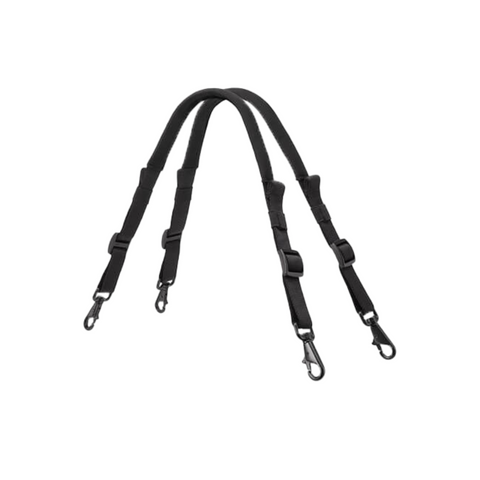With October being Pet Wellness Month, we wanted to talk about the signs you can look for that your senior dog is doing well. As a dog owner, it is your responsibility to make sure your dog is healthy physically and psychologically. Since you are with him the most, you are the best qualified to notice any changes in his health.
- Know what’s normal for your dog. No one knows your dog like you do. Know your dog’s habits, temperament, how much he usually drinks, and when he usually toilets. This way you can spot any changes or differences that may indicate a problem with your dog.
- Energy Level. Is your dog normally rambunctious or mellow? Has he slowed down as he has aged? Has he had any problems getting up and down the stairs or in and out of his bed? If he is having mobility issues, you may want to consider a full body harness such as the Help ’Em Up® It will help him get up and remain independent and comfortable for as long as possible.
- Fresh Breath. Healthy gums should be pink and firm. If you are hesitant about brushing your dog’s teeth, give him dental chews. If you see hard, white or yellow matter on his teeth, make sure this is brushed away as this is tartar and will lead to gum disease.
- Shiny Coat. Grooming your dog is a great way to run a mini physical exam at home. You want to keep his coat shiny and tangle free. His skin should not be flaking.
- Good Weight. One of the biggest keys to a dog’s health is a nutritious diet and a consistent exercise program. Don’t let your dog get overweight with too many between meal snacks
- Regular Bowel Movements. A dog’s urine should be clear yellow, and he should have one or two bowel movements per day. Runny, watery, straining, or bloody stools may mean a call to the vet.
- Bright and shiny eyes. Your dog’s eyes should be nice and clear, and you should be able to see your reflection in them. If the white of the eye is yellowing (jaundice) inflamed (allergies) or foggy (cataracts or ulcer), see your veterinarian. If there is any green or yellow discharge from the eyes, this could indicate an infection. Your dog’s eyelashes should not run into his eyeball.
- Clean ears. Make sure the ears have no waxy build-up, no discharge or no musky smell. Compare your dog’s two ears, because they should both look the same with no redness or swelling. If your dog scratches his ears too frequently or shakes his head, consider making a vet appointment.
- Cool and moist nose. It is an old wife’s tale that a dog’s nose should be cool and moist. It depends on the breed – some dog’s noses are moist, and others are normally dry. If your dog’s nose is running, it should be clear, never yellowish, foul-smelling or bubbly.
- Lumps and bumps. Run your hand over your dog’s body and make sure there are no lumps. If you find anything unusual, call your vet.
- Vaccinations. It is important for a dog to get his regular vaccinations to prevent fatal illnesses such as rabies, distemper, hepatitis, parvovirus and more.
Remember your dog can’t talk and tell you that something is wrong. It’s up to you to look for the signs and symptoms and call the veterinarian if you suspect any sign of illness. In the meantime, here’s to a healthy pup!



